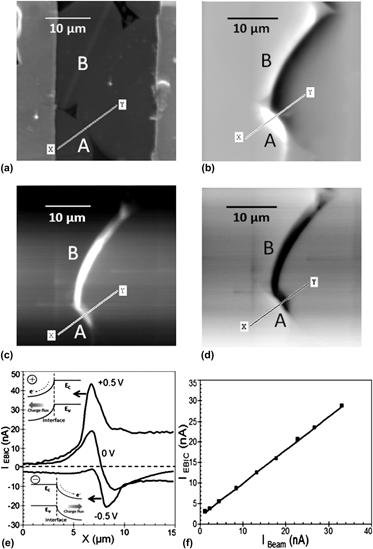Article contents
Bulk response and grain boundary microelectrical activity of high TC BaTiO3–(Bi1/2K1/2)TiO3-based positive temperature coefficient of resistance ceramics
Published online by Cambridge University Press: 23 October 2013
Abstract

Lead-free positive temperature coefficient of resistance (PTC) thermistors were synthesized from (1 − x/100)BaTiO3–(x/100)(Bi1/2K1/2)TiO3-based solid solutions, using a conventional mixed-oxide fabrication route, and sintered in N2 followed by air annealing. A maximum TC of 205 °C was achieved for x = 20. An increase in x from 0 to 20 decreased the grain size by more than 92% and increased room temperature resistivity (ρRT) by 7 orders of magnitude. For x ≤ 10, PTC ratio (ρmax/ρmin) ≈ 104.5 and temperature coefficient of resistivity (α) > 10.3%/°C were achieved using Mn and Al2O3:SiO2:TiO2 (AST) additions. For x > 10, ρmax/ρmin > 103 and α > 8%/°C were only obtained in samples sintered in N2 without subsequent air annealing. Complex impedance analysis revealed three relaxation processes, attributed to a semiconducting grain core, a PTC active grain boundary interface, and a grain boundary insulating layer. Local electrical activity was investigated by hot-stage conductive mode microscopy. The existence of symmetrical grain boundary electron beam-induced current and β-conductivity contrast at the grain boundaries, consistent with the presence of an electron trapping two-dimensional grain boundary plane, compensated by positive space charge layers and a low conductivity vacancy-rich layer, was revealed for the first time within this system.
- Type
- Articles
- Information
- Copyright
- Copyright © Materials Research Society 2013
References
REFERENCES
- 4
- Cited by


